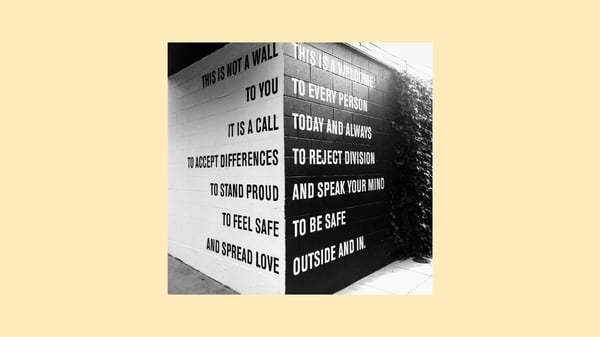How many times have you thought during an internal meeting "well, this could've been an email"? Many times I bet, just like me. This is why I'm on a mission to make internal events better, more worthy of your time. And this blog is all about it.
There is a lot of discussion around the topic of meetings and how they can be an absolute waste of everyone’s time. Especially during the pandemic, the number of meetings skyrocketed. At the same time, meetings were transferred to an online environment where bad participant experience or low participant activity is unfortunately common.
Developing internal meetings that are both professional and engaging can be a challenge, but it's certainly not impossible. In this blog, we'll explore some tips and tricks for making your management team, and other meetings, more effective, efficient, and enjoyable for everyone involved. This is all based on our own experience.
Participant experience builds from feedback
At Lyyti, we started developing our internal meetings just like we develop our external events. We realised they have many of the same characteristics and therefore internal events can be made better with the same type of measures you can use to improve any type of event.
We started with our management team meetings and the first step was to measure participant experience. We’ve now done it for over two years. We organise these meetings twice a month, so the number of measured meetings is over 50. Based on that experience, we have learned a lot.
There are two aspects of making meetings beneficial and useful - the first is consistent development. To be better at meetings, you need to understand where you've gone wrong and try to fix it. And the best way to do that is by asking for feedback.
- The last 5 min of every meeting is spent on providing feedback. We use Experience Value Score (EVS) for this purpose. It is very simple: everyone just answers whether the meeting was worth their time and provides open feedback.
- The meeting owner is responsible for analysing the feedback before the next meeting.
- The first 5 min of every meeting is spent going through the feedback together and discussing the planned changes.
And that’s it. The only way to keep this consistent is to keep it simple. Consistency wins intensity in the long run.
It’s good to notice that you can and should influence the participant experience. Especially, for recurring meetings you can improve it collectively.
Meeting practices makes perfect
For internal meetings to be wort our time, we all need to be in on the game. Therefore, the second aspect of succesful internal events is rules.
Our 10 commandments for internal rules are simple, yet effective. Every ogranisation probably has its own rules for engagement. but for us these 10 points have made the most difference:
- A clear structure of different types of meetings: weekly tactical (70 min), biweekly strategic (3hrs), offsite every four months (2-3 days), and ad-hoc when necessary.
- Each strategic biweekly meeting has a theme, and they are planned in the management team year clock. The contents vary a lot and are always planned based on the need, but follow a similar structure.
- Clear deadlines for materials: materials for the strategic biweekly meetings are always provided (using our template) on Friday at noon (the meeting starts on the following Tuesday at 9 am).
- Each topic of the meeting is tagged: “for information”, “for discussion”, or “for decision”.
- Each topic starts with a summary slide, where we state the needed preparations, the current situation, and the goal of the discussion.
- Action points per topic are listed by the meeting owner and gone through together at the end of the meeting to ensure common understanding.
- Action points from the previous meeting are checked again at the beginning of the next meeting to make sure they have proceeded as planned. Every action point always has an owner and a deadline to make it simple to follow up.
- Team development is on the agenda regularly (usually at the offsite). That is crucial to building a team where meetings can be great. Agreeing on meeting practices alone is not enough.
- All meeting practices have been agreed upon together, and we all keep each other accountable for following them. We have even agreed on a punishment if we don’t follow an agreed practice.
- We stick to the schedule. That might sound obvious, but it isn’t always. It is also about the meeting culture you wish to build. We start promptly and end as planned. Every time.
Meetings can be boring and useless. But they can also be exciting and useful. In the end, the difference is made by small choices repeated time after time.
We need to meet and discuss but we don’t have time to be in useless meetings. That’s why we are constantly thinking how we can make meetings better and really worth the time the participants invest in them.
Take the time to read out Ultimate Guide to Successful Events for even more insights on feedback, event retros and developing great and meaningful events.
You can download our template below for better meetings and you’ll be on your way to making your meetings engaging and interesting for all participants.
Hero photo by Jason Goodman on Unsplash









